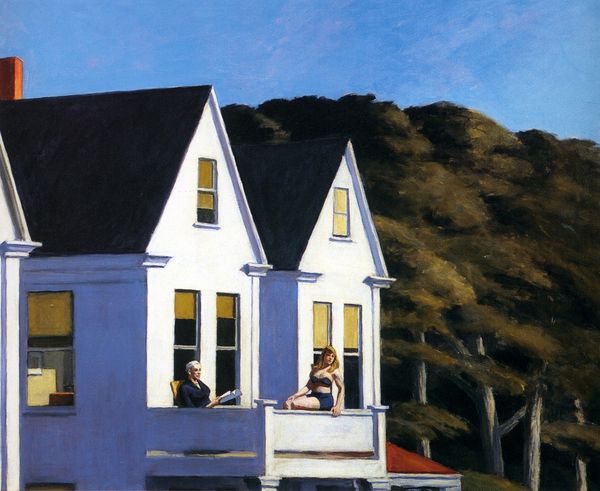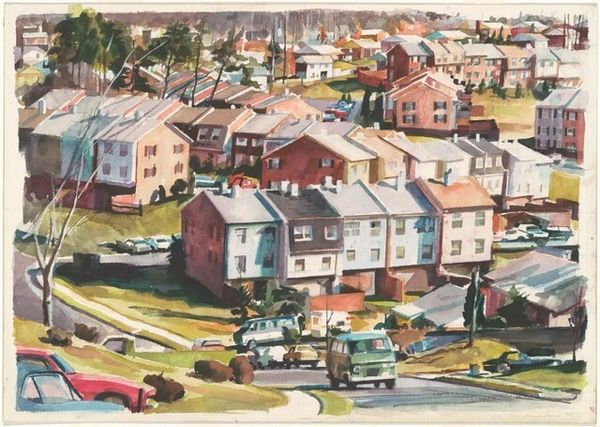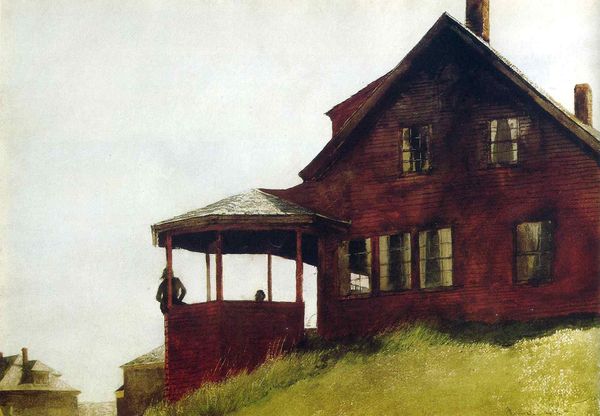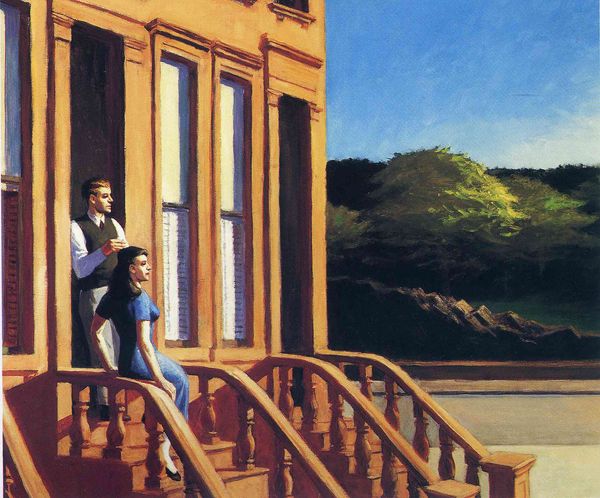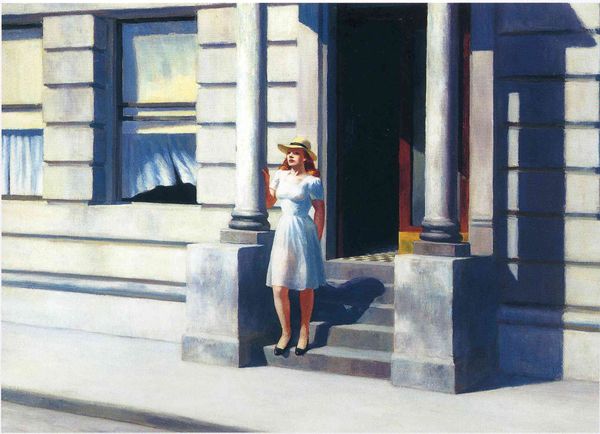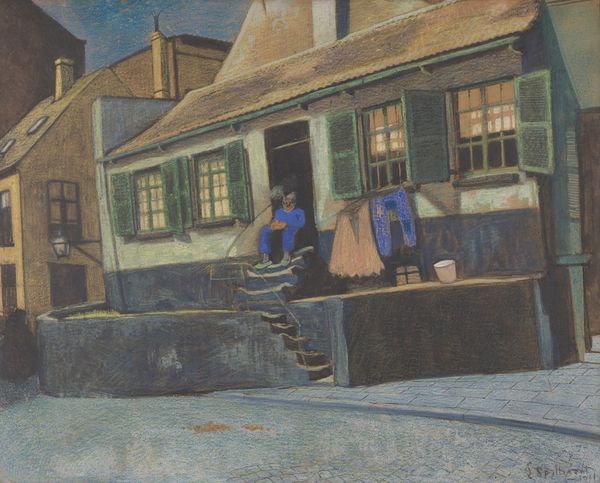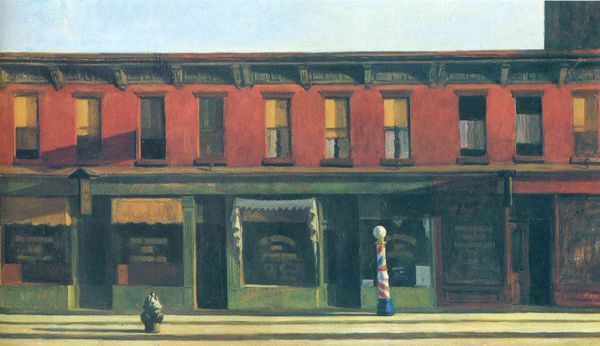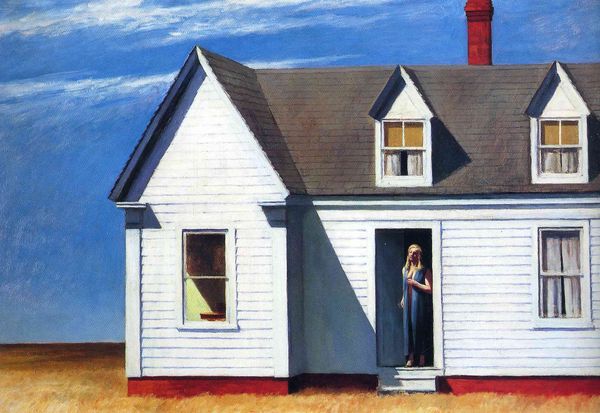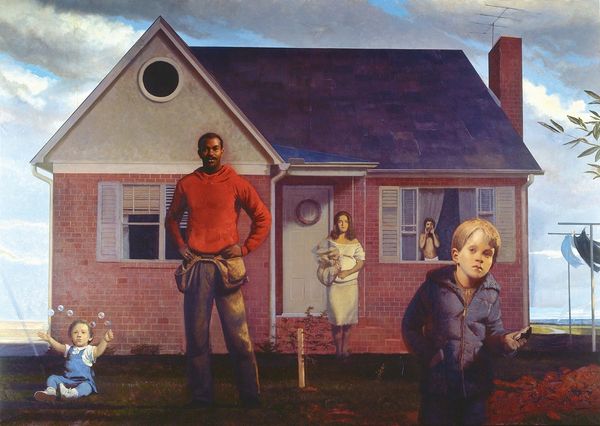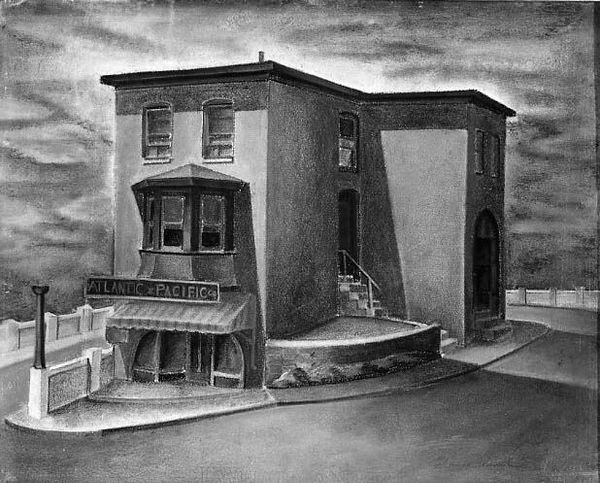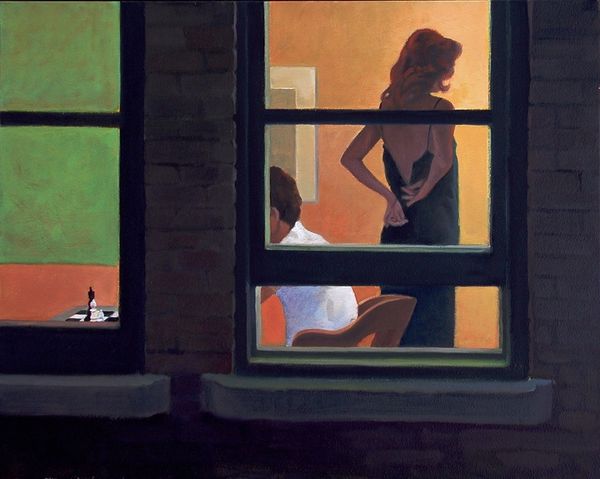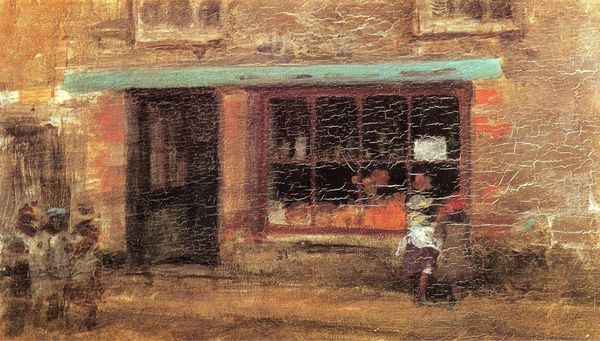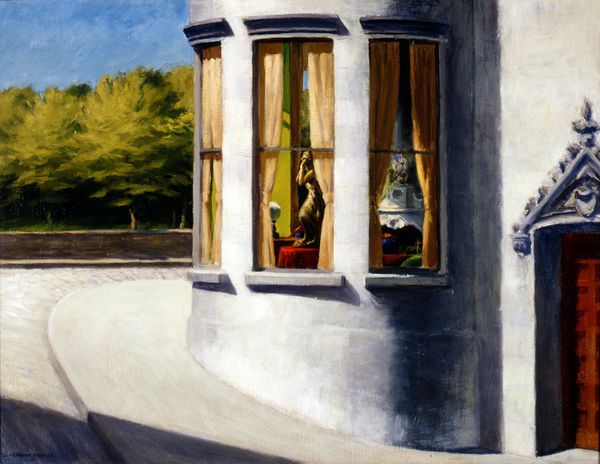
painting, oil-paint
#
painting
#
oil-paint
#
landscape
#
house
#
urban cityscape
#
figuration
#
oil painting
#
studio composition
#
cityscape
#
genre-painting
#
street
#
modernism
#
realism
#
building
Copyright: Edward Hopper,Fair Use
Curator: Edward Hopper's "Pennsylvania Coal Town," painted in 1947 and currently residing at the Butler Institute of American Art, presents a stark, almost unsettling slice of American life. Editor: It feels desolate. That overwhelming yellow, the geometrical forms of the houses... It evokes this odd blend of nostalgia and unease, doesn't it? Curator: Indeed. Hopper, known for his urban and rural scenes, captures that sense of alienation quite well. Notice how the architecture dominates the human figure – a solitary man, we assume, tending to his yard. His labor is somewhat dwarfed by the austere facades of the buildings. Editor: The figure looks a bit ghost-like, especially against that solid backdrop, like his work holds a certain meaning, a need to maintain some sort of connection, though… the connection isn't there. You said that Hopper does alienation, well, what can he do! It really puts forth an idea of our existence against structures that seem cold. Curator: Absolutely. The painting's composition employs a precise geometric structure. Look at the rigid horizontal and vertical lines, the flat planes of color. Hopper strips away the picturesque, giving us instead a view into a hard-scrabble existence, possibly a depiction of post-war America. It shows that everything carries something within and cannot run away from such thing. Editor: And that light! Almost an acid yellow. It feels unnatural, artificial almost, and I suspect it has something to say about the place and how it relates with those that reside there. A beautiful painting that carries a haunting truth that speaks volumes about Hopper's ability to capture raw feelings with brush and paint. It makes you think about the meaning of human toil against an industrial backdrop. What else would Hopper have to share with us? Curator: That yellow, some could read it as a sense of hope but in fact carries the gloominess found in Hopper's visual vocabulary. His understanding of urban and rural loneliness… the buildings as stand-ins for the lack of something in an environment. A masterpiece on the psychology of spaces. Editor: A canvas that certainly speaks to the human condition, leaving us pondering our place amidst this architecture.
Comments
No comments
Be the first to comment and join the conversation on the ultimate creative platform.
